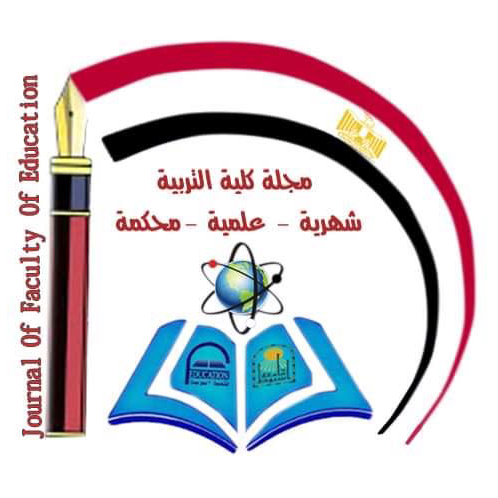Journal of Faculty of Education Assiut University - المجلة العلمية بكلية التربية-جامعة أسيوط

Article Title
Abstract
The present study aimed to explore the relationship between some auditory and visual perception skills and mathematics achievement among second-grade primary students in Assiut, the pilot study sample consisted of 50 students from the second grade of primary school in Abu Bakr Al-Siddiq School for Elementary Education of the Badari Education Department in Assiut Governorate, with an average age of 90.64 months and a standard deviation of 4.72 . The core sample was 75 male and female students, with an average age of 90.13 months and a standard deviation of 3.53 . The study used an achievement test in mathematics, the preparation of the research team, and tests of some auditory and visual perception skills using the computer prepared by the research team. It also used statistical analyzes and treatments on the SPSS - V25 program to determine the sensitivity and quality of the tests using the ROC model to calculate the components of the predictive accuracy of the tests.
The results concluded that there is a positive statistically significant correlational relationship between the overall score and the dimensions for tests of some auditory and visual perception skills and achievement in mathematics, and the study also found that all the classification accuracy values for sensitivity and specificity are higher than 85%, as well as the positive prediction value, which amounted to 87.2%. It indicates that the model is excellent and has a high discriminatory ability for those with low performance from others, and this decrease is a main indication that these students are at risk of experiencing disabilities in learning achievement in mathematics, and it also means the high predictive accuracy of the tests, and the results showed a high value of negative prediction, which was higher than 90 %. The prevalence rate of those with a risk of learning disabilities among the total number of students was 45.3%, and the overall prediction accuracy value of diagnostic tests for those at risk of mathematics Learning disabilities in was 93.3%, which means the ability of the tests to show students with high achievement.
Recommended Citation
محفوظ أحمد, سلوى
(2020)
"بعض مهارات الإدراك السمعى والبصري باستخدام الكمبيوتر وعلاقتها بالتحصيل فى الرياضيات لدى تلاميذ الصف الثاني الابتدائي بأسيوط,"
Journal of Faculty of Education Assiut University - المجلة العلمية بكلية التربية-جامعة أسيوط: Vol. 36
:
No.
6
, Article 8.
Available at:
https://digitalcommons.aaru.edu.jo/jfe_au/vol36/iss6/8

